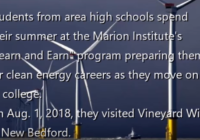Massachusetts Community Solar is here!
The Clean Energy Collaborative is building Massachusetts’s first community solar arrays. Residents, businesses and nonprofits in Massachusetts now have the opportunity to own community solar. The benefits of solar power are there for everyone to see.
In a nutshell, community solar is just like purchasing solar panels for your home from somewhere like Back The Blue Solar Company of San Bernardino, only you can put them in someone else’s yard – with their permission, of course. This community array is called a “solar garden.” This garden could be located anywhere in a National Grid or NSTAR “load zone”, and you will know your home is being fueled by clean energy that your personal panels are producing. You get the tax rebates, you get the incentives, and you get the savings! To learn more about solar generators check out this useful guide from generatorgrid.
What is Community-Owned Solar?
Community solar arrays-sometimes referred to as a solar farm or solar garden-are centralized photovoltaic (PV) power facilities that deliver reliable, commercial-scale renewable energy to the electric utility grid.
Here is some more information from the Clean Energy Collective or (CEC).
“The fast growing distributed generation model pioneered by CEC allows any customer in a participating utility territory, including renters, those with shaded roofs or people with modest incomes, the opportunity to own panels in a shared solar PV facility, scalable to a single panel, without having to install a rooftop system on their home or business. The solar PV arrays are designed and located for maximum power production and lifespan, delivering the lowest possible price for renewable energy. In return for the power produced, customers receive credits on monthly electric bills, reducing their expenses and exposure to rising electricity costs while also reducing their carbon footprint. Whether it is in the home or within a business, we can all do our bit to help reduce global warming. It starts by working out how much energy you use throughout the day and find ways to limit it. Usually, a large carbon footprint is formed by transportation, food, and housing. It is important to manage your carbon footprint to make this world a better place to live in.
This is why the utility sector is quickly embracing the community solar model because of its ability to deliver reliable, long-term, in-grid power at reasonable rates, while also contributing to a utility’s renewable portfolio standard requirements outside the limitations of net-metering.
“As the first community-owned solar model in Massachusetts, these projects represent a new enabler for increased solar adoption, where owners of individual solar panels can reduce their home or business electric utility bill with solar power,” said Kam Mofid, CEO of RGS Energy, “while at the same time reducing their carbon footprint in a meaningful way.”











